I'm using an instrumentation amp for a bridge circuit for strain gauges. However, the output range is always positive (the lowest value I can get is zero).
The amp I use is AD620. For power supply I used two 9V batteries to get the +-9V.
Is there something wrong with my circuit?
edit:
I want to build a quarter-wheatstone-bridge circuit with a strain gauge as resistor. It should look like this(R1 is variable resistor):
To balance the bridge(R1RG = R2R3), I used a potentiometer instead of R1. I don't have resistors with the same value as the strain gauge available so a potentiometer seems to be the best choice.
And this is the updated schematic with all parameters for my circuit, the resistance of the strain gauge is 350 ohm.
 P.S. sorry for the bad schematic and wiring, it's my first time doing a circuit-related project like this. I would really appreciate any suggestions from you.Thanks a lot!
P.S. sorry for the bad schematic and wiring, it's my first time doing a circuit-related project like this. I would really appreciate any suggestions from you.Thanks a lot!
